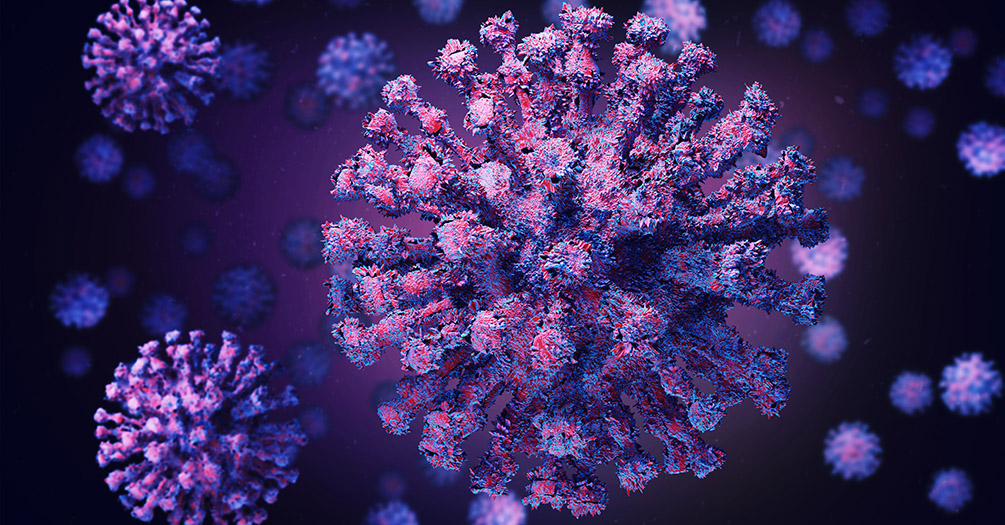Researchers discover enzyme inhibitors to stop replication of SARS-CoV-2, forging a path for potential new antiviral drugs

Q&A with Rudy Richardson
Dow Professor Emeritus of Toxicology
Researchers from the University of Michigan School of Public Health studied two viral enzymes, Mpro and PLpro, essential for the survival of SARS-CoV-2, as targets for potential new antiviral drugs to defend against COVID-19. Their work was recently published in Computers in Biology and Medicine.
We spoke with Rudy Richardson, Dow Professor Emeritus of Toxicology in the Department of Environmental Health Sciences at Michigan Public Health and senior author of the study, to learn more about the work and implications for the discovery of additional antiviral treatments for COVID-19.
Richardson is also a professor emeritus of Environmental Health Sciences and associate professor emeritus of Neurology.
What were some of the significant findings from this work?
Using molecular docking, we identified compounds (inhibitors) that fit into the active site of each of the viral enzymes, thereby preventing these catalytic proteins from carrying out their normal functions in the virus. The docking process has been likened to finding keys (representing the inhibitors) that fit into locks (the active site machinery of the enzymes).
However, the docking results provide only static snapshots of the lock and key fit that cannot reveal whether or not the key can be jostled out of position when the lock and key are shaken by external forces. In reality, molecules of all kinds are in constant motion, which is fueled by thermal energy. Therefore, we subjected our enzyme-inhibitor complexes to molecular dynamics simulations carried out at body temperature to mimic the normal motions of the molecules. This technique gave us movies of the enzyme-inhibitor complexes, enabling us to see if the inhibitors remained within the active site of each of the two enzymes or if they were shaken loose. We were then able to select the most tenacious inhibitors for further studies.
A serendipitous finding involved the Mpro enzyme, which consists of two identical protein chains. When these chains are separated, the enzyme can no longer function. From molecular docking, we found compounds that inserted themselves in between the two protein chains in sites known to be involved in regulating the activity of the active site of the enzyme, called allosteric sites. These results expand the scope of potential antiviral drugs to include allosteric inhibitors as well as active site inhibitors.
How does this discovery contribute to what we know about antiviral treatments and medications for COVID-19?
In diverse areas of therapeutics, including medications for cancer, infectious diseases, mental health disorders, and neurodegenerative diseases, we are finding that the old paradigm of "one drug, one target" is not as effective as the newer approach of developing drugs that can act simultaneously on multiple targets relevant to the disease. Our study has taken the newer multiple-target approach. This choice has led to the discovery of compounds that can hit the active sites of two enzymes that are essential for function of the virus that causes COVID-19, as well as hitting allosteric sites of one of these enzymes.
What do you plan to do next?
In addition to the items for future work already mentioned above, we intend to look at targeting human host factor proteins that are involved in the entry and/or replication of the virus during the infection process. This approach is the principal aim of our grant from the Alternatives Research and Development Foundation (ARDF). Their goal is to fund research to reduce or eliminate the use of animal subjects in research – hence, our employment of purely computational methods.
- Learn more about the Department of Environmental Health Sciences
- Read more research from Michigan Public Health
Media Contact
Destiny Cook
